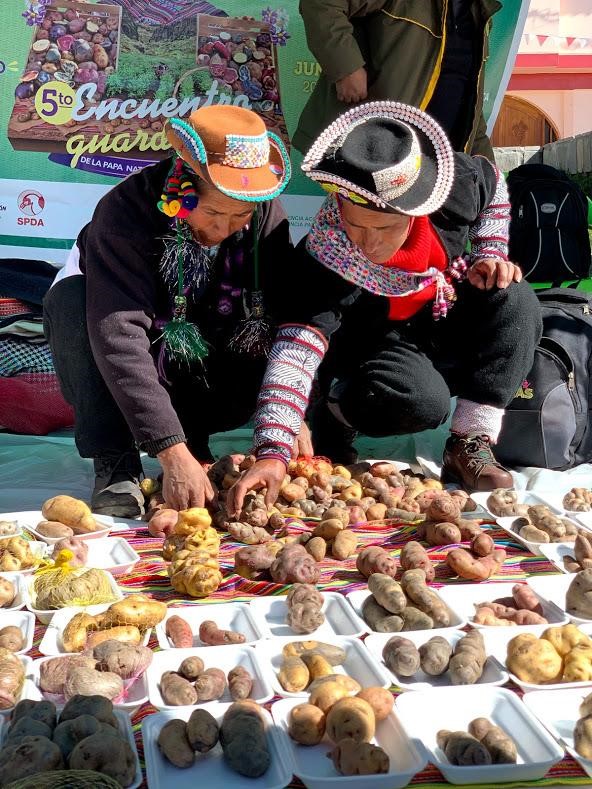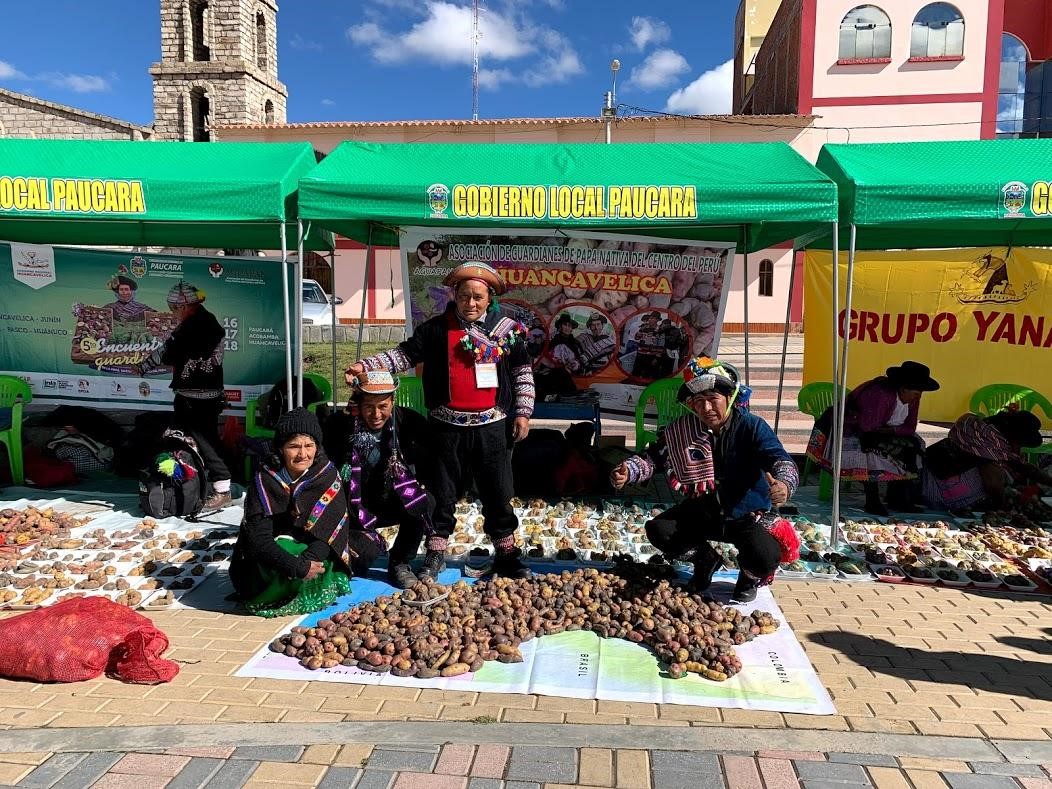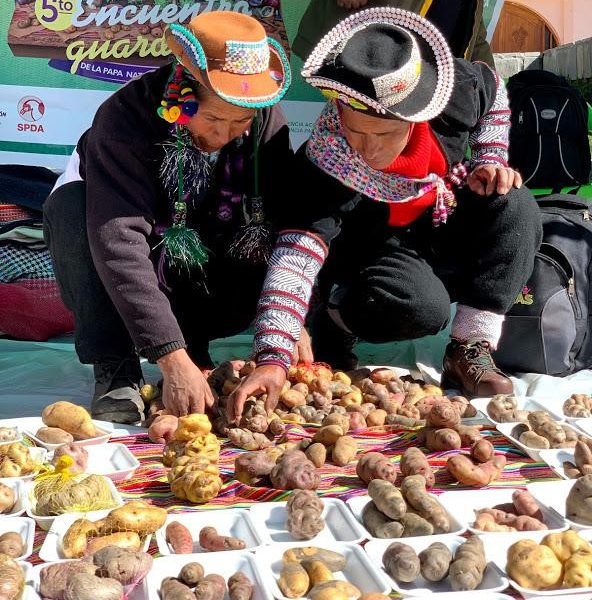
Farmers setting up their stand. Each variety is uniquely adapted to a specific environment, and each one has its own flavor and uses. Photo credit Stefany Naranjo/CIP
Indigenous farmers from the central Peruvian Andes gathered in Paucará, Huancavelica for the 5th Annual Assembly of AGUAPAN (Association of Guardians of the Native Potato). AGUAPAN is a farmer-led association with members from five regions: Huánuco, Huancavelica, Junín, Pasco, and Lima. “Since the start of the CGIAR Research Program on Roots, Tubers and Bananas, the International Potato Center (CIP) has gradually advanced the implementation of a hotspot-based, in-situ network for potato landraces in the crop’s center of origin” says Stef De Haan, who coordinates CIP’s Andean Initiative, a farmer association dedicated to conserving the biodiversity of native potatoes.
On the first day of the annual assembly, the 47 members of AGUAPAN and their guests quickly took their seats, excited about the presentations and the news of new partnerships. They learned that a second potato seed company had agreed to partner with AGUAPAN to financially support the guardian families. This will allow more members to join the association as both seed companies (HZPC and AGRICO) are committed to supporting in-situ conservation through benefit sharing. In addition, the McKnight Foundation will work with CIP and the NGO Grupo Yanapai in a new project to characterize the potato landraces kept by the custodians. The project will also support better marketing of native potatoes, so the public can get to know and love the richness of landraces from central Peru. Furthermore, the project will encourage young farmers to take part in safeguarding the living treasure they have inherited from their parents and grandparents.
Early on the morning of the second day, the group held a panel with farmers and other experts to discuss the challenges that smallholder farmers face while trying to maintain agrobiodiversity, including difficulties arising from climate change. But they were also proud of their success in maintaining diversity and how they were bringing new knowledge to manage an ancient crop. They talked about how to involve young people and they liked the idea of starting a mentorship program with local universities.
On the third day in Paucará, farmers in bright, traditional clothing set up their stands across the sunny town square. Custodian farmers showed off hundreds of potato landraces, of many shapes and colors, brought from their own fields across Peru’s many agro-ecosystems. While this is just a sample of the potato’s landraces, on that morning the plaza of Paucará held vastly more biological diversity than is found in the handful of commercial varieties grown in other parts of the world.

Farmers from Huancavelica. There is more genetic diversity in the potatoes at this gathering than in all the world’s commercial fields. Photo credit Stefany Naranjo/CIP
As visitors visited the stalls, the farmers could tell the story of each potato, with its unique traits, and special value. Some of these colored potatoes are rich in antioxidants that may help to prevent cancer and diseases related to aging. When farmers were asked which their favorite potato was, they couldn’t say.
“I don’t have a favorite potato,” said Marcelo Tiza, a potato guardian conserving more than 120 landraces in his fields. “It is like with your children, you love them all unconditionally and you do not prefer one over the other.”
This is the consensus of the guardians. Farmer Aurea Mendoza Capcha said, “All of the potatoes are my favorite, they each have a unique taste, so I don’t settle on just one. I enjoy seeing all of the distinct colors in the pot when I cook them.”
There is something to say about each landrace, and the guardians of the native potatoes are eager to share their stories. For these farmers to be able to continue, they need the support of stakeholders. AGUAPAN connects the guardians with other stakeholders to allow farmers to earn money by conserving crop diversity. AGUAPAN is helping its members access funds through benefit-sharing where some of the profits derived from using the landraces are shared with the farmers who preserve them. Hopefully, this will support the families that maintain the genetic diversity of potato in its center of biodiversity. AGUAPAN empowers farmers to do what they do best and helps them to overcome the challenges of erratic weather and increases in pests and disease. These custodian farmers will keep striving to protect the hundreds of unique landraces and pass their knowledge on to the next generation of farmers so that they too can conserve the potato’s genetic diversity which allows the crop to evolve and feed the world.
Written by Stefany Naranjo and edited by Stef De Haan and Bettina Heider.
